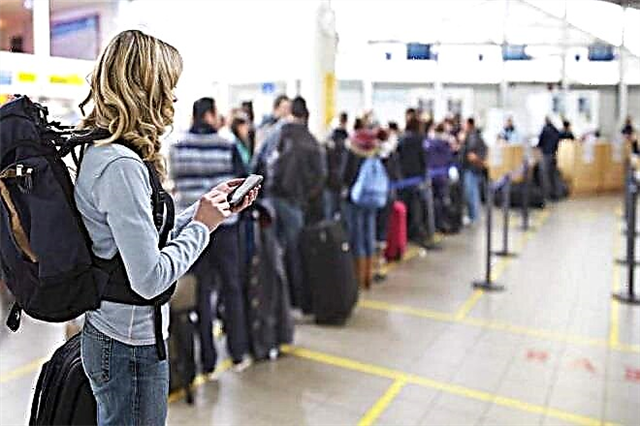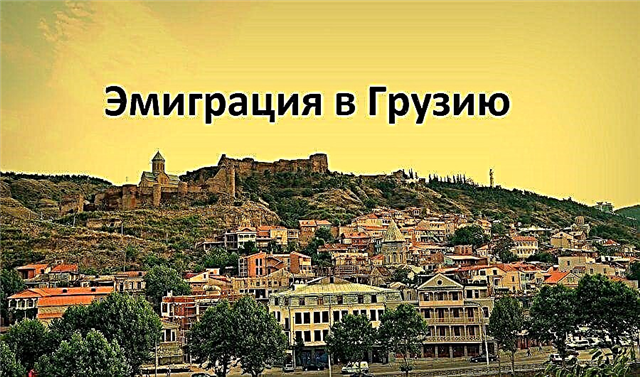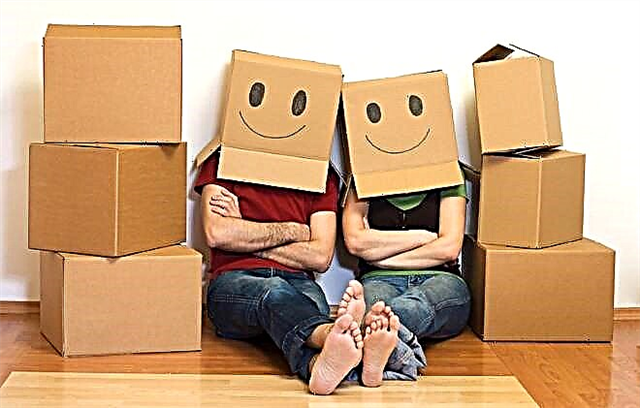Finland, a small northern country, attracts attention because over the past few years it has confidently occupied the top positions in world rankings and the lists of the most prosperous, safe and prosperous countries in the world. The inhabitants of the Land of a Thousand Lakes feel happy. It is interesting how the Finns managed to achieve such results, why the standard of living in Finland, a country without gas, oil, black soil and other important resources, is much higher than, for example, in neighboring Russia, one of the richest countries in the world.

Living standards in Finland: components of success
In 2021, according to the UN World Happiness Report, Finland was ranked first among the happiest countries in the world. Perhaps not all Finns share this point of view, but the facts show that in terms of welfare, economic stability, security for life, environmental situation, educational opportunities and other components, Finland is indeed in the top ten countries in the world.
Thus, the London analytical center Legatum Institute at the end of 2021 gave Finland an honorable third place in the ranking of countries in the world in which citizens live freely and comfortably.

Among the reasons for such success are the correct course chosen by the government, the competent use of external factors - membership in the EU and a common border with the Russian Federation, special mental traits of the Finnish people.
It should be noted that the main indicators of the standard of living in the country, on which the rest depend, are:
- real wages for labor;
- social ideals in society and their implementation through the social policy of the state;
- the state of medical services for the population.
What salary can you expect in Finland
The working day is 8 hours (40 per week). All overtime work is paid double. The salary in Finland depends on several factors:
- industry, specialty or profession;
- availability of special education and qualifications of the employee;
- the presence or absence of work experience in the specialty;
- employment sector - private or public;
- region or city of employment. In big cities - Helsinki, Turku, Tampere and others, salaries are higher.
The highest salaries for high-ranking government officials, graduate scientists - 7 thousand euros, IT workers and doctors - up to 6 thousand euros. For engineers, architects, builders - up to 4 thousand, teachers, psychologists, veterinarians - up to 3 600.
Such professions as childcare, maid are paid in the amount of up to 2 thousand. A seasonal worker can earn up to 100 euros per day.
On average, men earn 15-20% more than women.
It should be noted that in Finland there is a progressive taxation: taxes eat up to 35-40% of salaries. The higher the income, the higher you have to pay taxes.
Social protection in Finland: benefits, allowances, compensations, benefits
The right to social protection in Finland is enjoyed not only by the citizens of the country, but also by foreigners legally residing here with a residence permit or permanent residence. The sphere of state support has received special development and covers:
- mothers or fathers (this is the practice in Finland): maternity package at the birth of a child (64 items) or an amount of 170 euros, maternity leave up to 8 weeks, maternity allowance for 105 days, parental leave and maternity allowance for 6 months. (for fathers - for 54 working days);
- unemployed: unemployment benefits for 400 days, with work experience less than 3 years - 300 days, if 58 years old before dismissal - 500 days;
- low-income people: subsistence social compensation - rent and own;
- children under 17 years of age - for each child until they reach 17 years of age, on a monthly basis (on the 26th), the state pays an allowance - lapsilisä. For the first child - about 95 euros, the second - 105, the third - 134, the fourth - 153, all subsequent ones - 173 euros.
- persons with disabilities - disability pension;
- persons of retirement age - labor, national or guaranteed pension.
Medical care in Finland
The health care system in Finland, like in most EU countries, is based on public clinics, which are supported by budgetary (sairaalat) and municipal (terveysasemat) funds, and partly from patient contributions.
There are also private clinics in Finland. Although most medical services are paid and treatment in Finland is expensive, thanks to basic KELA insurance they are fully or partially compensated for by the citizens of the country: on average, they pay 20-30% of the actual cost of treatment.
Some of the services can be obtained free of charge: emergency care, dental care for children, mammography for women over 50, PAP test, etc. Free services may vary depending on the region.
The quality of medical care in the country is very high. Thus, in the field of diagnostics, treatment of oncological and cardiovascular diseases, Finnish doctors occupy a leading position in the world.
An ambulance in Finland reaches a patient in 7 minutes.
Particular attention is paid to the prevention of diseases, the promotion of a healthy lifestyle. The evidence of the correctness of this approach is the increase in the life expectancy of the Finns. In 2021, the average life expectancy in Finland was 81 years.

Is it expensive to live in Finland
Finland is often referred to as one of the most expensive countries in Europe. There is some truth in these words - prices here are about 23% higher than the EU average. However, when assessing the cost of living in Finland, there are a number of factors to consider:
- decent salaries and high purchasing power of the country's residents. Prices for goods or products that are expensive for visiting tourists are not so high by the standards of local residents;
- social protection of low-income members of Finnish society, families with children, youth, disabled people, for whom most of the costs are borne by the state;
- high quality and environmental friendliness of products. Buying food in chain super- and hypermarkets (Lidl, Prisma, S-market, K-citymarket, Robinhood) can reduce the cost of a grocery basket by 10 - 30%;
- availability of outlets, sales, discount systems for clothes, shoes and other goods;
- higher prices in the capital and major cities.
The operating expenses in Finland for a month for a family of four renting an apartment are on average 2 thousand euros. In general, the ratio of the quality and cost of living in Finland suggests its high competitiveness and attractiveness for immigrants.
The main expense item is housing
The land was of the greatest value for the Finns at all times. It is land, vacant or built-up, that is considered real estate here. Real estate prices in Finland are consistently high and depend on its location: higher in the capital, big cities with developed infrastructure, resort areas.
Average prices for residential real estate, 1 sq. m / euro:
| Location | Secondary housing stock | New buildings from the developer |
|---|---|---|
| Helsinki | 3750 | 4850 |
| Provinces | 1710 | 3240 |
| In the whole country | 2340 | 3660 |
Each new owner of an apartment (except for persons from 18 to 39 years old when buying a first home for themselves) in Finland must pay tax for the transfer of ownership - 4% of the value of the land or 2% of the cost of apartments in a joint-stock company, as well as pay an annual municipal tax (0.37-0.80% of the assessed value) and cover utility costs.
In any case, owning real estate can significantly reduce living costs. So, excluding utility costs, monthly rent of a two- or three-room apartment in Helsinki will cost 1500-2000 euros per month, in Tampere - 1000, in a small town - 400-600 euros.
Grocery basket cost
The Finnish Consumer Union (Kuluttajaliitto) periodically conducts price surveys in different regions and stores in the country for 9 main products. The highest prices were recorded in Helsinki. The lowest are in the Lidl chain of stores, regardless of the location of the supermarket.
| Products | Price (EUR) |
|---|---|
| Oat flakes (1 kg) | 1—1,3 |
| Milk (1 l) | 0,8—1,2 |
| Eggs (12 pcs) | 1,4—2 |
| Edam cheese (1 kg) | 6—11.50 |
| Ground beef (0.4 kg) | 2,8—3,8 |
| Juhla Mokka coffee (0.5 kg) | 3.3—4.7 |
| Bananas (1 kg) | 1,15—1,5 |
| Tomatoes (1 kg) | 2—5 |
| Yogurt 2-3% (1 l) | 2,3—2,5 |
Prices for other products:
| Potatoes (1 kg) | 0,75—0,9 |
| Bread (loaf) | 1 |
| Rice (1 kg) | 1,5—2 |
| Cucumbers (1 kg) | 3.5 |
| Apples (1 kg) | 1,5—2,5 |
| Chicken fillet (1 kg) | 11.5 |
| Trout fillet (1 kg) | 11 |
| Black tea (50 disposable tea bags) | 2 |
| Local beer (0.5L) | 1—2,7 |
| Finlandia vodka (0.5 l) | 22—28 |
You can save on the purchase of products a day before the expiration date indicated on the packaging - the price is reduced by 30%. In addition, you can always save on clean water - drinking water in Finland simply flows from the tap.
Public transport costs
Public transport in Finland is very widespread:
- Air. There are 27 airports in the country (5 of them are international). The airlines are served by Finnaire, Flybe and others. You can fly from Helsinki to Ivalo (a city in the north of the country in Lapland) in two hours.
- Railway transport. The capital and all parts of the country are connected by regional trains and InterCity. Transportation is carried out by the state-owned company VR.
- Intercity buses. It is the most popular mode of transport in the country, 90% of its territory is covered by bus traffic (www.matkahuolto.fi, www.onnibus.com/, etc.). Promotions are often held: travel from Helsinki to Turku - 5 euros, to Tampere - 2 euros.
- Water transport (especially in demand during the navigation period) - ferries, boats, motor boats. This is the only mode of transport by which you can get to the Åland Islands.
- Public transport in Finland is represented primarily by buses. Helsinki also has city trains, trams and metro. One-time travel costs 2-4 euros. The current fare for public transport in 2021 can be found at www.hsl.fi/en/tickets-and-fares.
Prices are on average 15–20% higher than the European ones, but the length of routes in Finland is also long. Fifty percent discounts are provided for children, students, pensioners, etc. also have benefits.
Finnish mentality: pros or cons
Listing the disadvantages of living in Finland, some Russians mention the terrible (from their point of view) mentality of the local population: the Finns do not let close to them, you cannot philosophize with them over a glass, Finnish girls are too feministic, excessive slowness (it is difficult to agree with this - it is enough to remember the Finnish racers or hockey players), etc.

All such assessments are the result of erroneous stereotypes. If someone is not like the other, this is not necessarily a bad thing.
To understand the peculiarities of life in Finland, it should be remembered that Finns have long been distinguished by the following qualities:
- ability to work;
- zeal and frugality;
- orderliness and orderliness;
- slowness and prudence in decision-making;
- punctuality;
- laconicism;
- increased responsibility;
- reverent attitude towards nature;
- respect for personal freedom.
Interesting fact. The Finnish language presents a serious test for Russians who want to become residents of the country. There are many concepts in it that have no analogues in Russian, but are very close and understandable to every Finn. For example the word Sisu. This quality of character is a fusion of composure, patience, endurance, willpower, endurance. Finns believe that it is thanks to this quality that Finland has achieved prosperity today.
Traditions and customs in Finland are carefully maintained: Finns go to saunas with families, love to sing in chorus (this passion is universal in Finland) and drink black coffee (an adult resident of the country accounts for 12 kg of grains a year), go to church (75% of Finns are Lutherans), love the epic "Kalevala".
The attitude towards foreigners in Finland is reserved. Finns look closely at a new person for a long time, evaluate him - what kind of boss he is, how he treats his wife and children, what he is capable of and whether it is worth spending time with him. Manifestations of racial discrimination are extremely rare here - ignorance and coldness are more likely.
Russian diaspora in Finland
Russians have been living in Finland for a long time. Today it is the third largest ethnic group in the country (after the Finns and Swedes), which numbers more than 75 thousand people or 1.5% of the country's population. Of these, 30 thousand hold both Finnish and Russian citizenship.
Most of Russians live in Helsinki (over 40%), in large cities - Turku, Tampere, Oulu (20%). In megalopolises and big cities, it is easier to find a high-paying job for qualified specialists in the field of computer science, engineering, medicine.
Many Russian immigrants also live in the southern regions of Finland, along the border with Russia - the influx of Russian-speaking tourists here provides them with work.
Several dozen Russian public organizations operate in the country - the All-Finland Council of Organizations of Russian Compatriots (OSORS), FARO, Russian Club and others; Russian-language press is published: Mozaika, New Borders magazines, Spektr newspaper.
In recent years, the situation around the Russian diaspora in Finland has become somewhat tense. The Finnish magazine SUOMEN KUVALEHTI caused a flurry of criticism in the media, publishing exposing materials according to which OSORS, FARO, Mosaic, instead of creating a positive image of Russia, “assimilated” millions of euros of Finnish taxpayers. The attitude of the local population towards Russian immigrants has become more wary and suspicious.
Which cities are better to live in Finland
Finnish sociologists regularly conduct surveys among the population in order to determine the best cities in Finland to live in. It is interesting that the capital of the country has not won prizes in such ratings in recent years, although it certainly falls into the top five.
Helsinki is most attractive for immigrants who come to Finland in pursuit of comfortable living and new job and business opportunities. The Finns themselves consider the capital to be too noisy and uncomfortable city and prefer quieter places:
- Tampere is Helsinki's constant rival. It is this city that most often manages to squeeze the capital due to the better image or the quality of municipal services. Tampere's stakes in the dispute between cities are increased by the fact that it is here that the "Valley of the Moomins" - the museum of the writer and artist Tove Jansson, is located.
- Turku is the third city where many Finns want to live. It is one of the oldest cities in Finland and is often compared to Paris.
- Oulu is the center of Northern Finland, the cycling capital of the country on the shores of the Gulf of Bothnia.
- Jyväskylä - Finns call it the coziest city in the country.
- Kuopio is a paradise for children and their parents.
- Jöensuu is the undisputed leader for the Russian diaspora - a town bordering the Russian Federation, where the main advantages of life in Finland are concentrated: Finnish comfort and infrastructure, airport and university, peace and safety, plus a bonus - many residents speak Russian.
The list of the best cities to live in Finland goes on and on until it turns out that this country is comfortable to live everywhere.
Instead of a conclusion
Finland is rightfully one of the ten most comfortable countries in the world to live in. The level of well-being of citizens, economic and political stability in the country, security, a favorable environmental situation, balanced social policy, a high degree of development of education and medicine allow us to speak of a high quality and standard of living. The life of an emigrant in Finland will be guaranteed safe and secure, provided that they strictly follow the laws, respect local regulations and rules, master the Finnish language, and sincere desire to become a part of this country.











